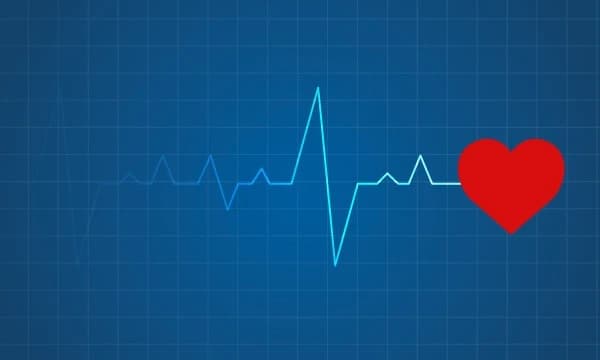Risk Of Heart Attack Is Increasing in Young People - How to diagnose if you have a problem in your heart?

Medically Reviewed By
Dr. Ragiinii Sharma
Written By Prekshi Garg
on May 16, 2022
Last Edit Made By Prekshi Garg
on Mar 16, 2024

Studies suggest that heart attack rate has shockingly increased by 2% since last year in the young age group, creating an alarming concern. From poor lifestyle choices to the fast-paced lifestyle, there are several contributing factors to the rising risks of heart attacks in young people, especially in individuals between 20-30 years.
It is beneficial to note that the main reasons behind the rising incidence of a heart attack in young adults is blockages in the heart, lack of timely diagnosis, the prevalence of fast-food and unhealthy diets, etc. If not diagnosed and treated on time, myocardial infarction (heart attack) can be fatal for individuals, despite their age.
|
Heart diseases aren’t an “old people’s disease” anymore. More and more of the younger generation are falling prey to its clutches. If you are experiencing signs of chest pain, discomfort, weakness, and numbness, it could be an early sign of heart disease. Don’t take the symptoms for granted. Instead, get thorough testing. Book an ECHO, Chest X-Ray, or ECG to keep track of your heart health. Invest in your health today. |
This article will look into the causes behind the rising risks of heart attack and the different early diagnosis methods for preventing heart attack.
In this Article
What are the Causes of Heart Attack in Young Adults?
The primary reason behind a heart attack is a major blockage in one of the coronary arteries. Blockages or fat deposits in the arteries often happen over time and aren’t an outcome of a day.
Also known as plaque build-up, the arterial blockage is a steady build-up of fats, including cholesterol. The build-up continually narrows the arteries, leading to a dire condition known as atherosclerosis.
As the blockage in the coronary artery increases, the restricted blood flow leads to poor oxygen supply to the vital organs in the body, leading to ischemia.
Some of the primary risk factors that contribute to the incidence of heart attacks in young age include:
Hypertension or high blood pressure
The prevalence of high blood pressure is increasing in young adults. Over time, hypertension damages the heart muscles and directly causes arterial damage.
In patients with hypertension, the heart has to work in overdrive to pump the blood to the rest of the body. This leads to the thickening of the muscles of the ventricles. The prevalence of thickened ventricles in the heart leads to sudden cardiac arrest, heart failure, and death.
Diabetes
Studies show that diabetic patients are up to 4x at risk of heart attack than non-diabetic individuals. The persistently high blood glucose levels directly impair the blood vessels supplying to the heart.
The constant wear and tear of the blood vessels lead to heightened risks of blockages and fat build-up in the arteries, a condition known as atherosclerosis. This contributes to heart attack risks and even heart failure in most young adults.
People with diabetes are also at a higher risk of developing other chronic disorders, including sleep apnea, obesity, and cardiovascular complications, all of which further enhance heart attack risks.
High cholesterol levels
A primary vector in arterial blockages, the elevated cholesterol levels, triglycerides, and low-density lipoprotein cause the arteries to narrow with the fat deposition.
High-density lipoprotein has cardio-protective properties, while an elevated level of bad cholesterols does the opposite. Poor dietary choices, especially the consumption of junk food and refined foods, are associated with high cholesterol levels in the body.
Obesity
Another common risk factor contributing to the risk of a heart attack in young people is obesity. People with an unhealthy BMI are often at risk of developing chronic and metabolic disorders, including atherosclerosis, high cholesterol levels, hypertension, sleep apnea, etc.
Studies suggest that losing even 10% of the excess weight, especially the visceral fat accumulated around the abdomen, reduces the incidence of a heart attack. Metabolic syndrome also increases the risk of heart attack by 2x.
Sedentary lifestyle
Young adults, especially those in the 20-30 years age group, succumbed to the rat race of corporate lifestyle where they spend a major part of the day sitting in front of a system with little to no movement.
Lack of physical activity is another major contributor to heart attacks in individuals. Inactivity contributes to increasing weight, high cholesterol levels, excess deposition of visceral fats, and hypertension, which are massive triggers for heart attack.
Stress
Studies suggest that chronic stress in people leads to heart and circulatory diseases. One of the primary reasons behind this is constant high levels of blood pressure. Hypertension eventually worsens arterial health and contributes to blockages, triggering a heart attack.
Young people under stress also pick up poor habits like smoking and vaping, which are further contributing factors. Research suggests that smoking a pack of cigarettes in a day enhances the risk of heart attacks by 2x.
Even e-cigarettes and vaping have similar effects on heart health and increase the risks of a heart attack by 34%.
Substance abuse
Although not a common trait among EVERY young adult, substance abuse contributes to a certain percentage of people experiencing a heart attack. Illicit drugs, including marijuana, drastically increase the heart rate, leading to potential risks of heart attacks.
Similarly, other hard substances and drugs cause tachycardia (increased heart rate), and vasoconstriction (narrowing of blood vessels), thereby elevating the blood pressure.
This cumulatively enhances the risks of a heart attack in individuals with no other physical complications.
A young adult diagnosed with rheumatoid arthritis and lupus is also at risk of heart attacks. This is one of the primary reasons why doctors suggest getting thorough and routine testing to check heart health and functions.
How is the risk of Heart Attack Diagnosed?
Since the rise in the prevalence of a heart attack, doctors consistently advise people to get an annual check-up to rule out any undiagnosed complications. Even if you are physically fine, getting tested for any underlying cardiovascular complication is ideal.
Some of the potent ways to diagnose the causes of a heart attack at a young age:
Electrocardiogram (ECG)
ECG measures the heart’s electrical activity in waves to check for abnormalities in the heart’s rhythm and beats. The test uses electrodes (or leads) placed on the chest and limbs to record the heart functions.
A healthy individual will have a normal ECG graph. However, a patient with heart problems will showcase irregularities in the graph. Since a damaged, thickened, or injured heart muscle cannot conduct the electrical impulses optimally, the same reflects in the ECG report.
Blood tests
Patients at risk of a heart attack or who already have had a heart attack will show elevated levels of certain proteins and enzymes in the blood.
If you aren’t exhibiting any stark heart attack symptoms but have had a heart attack, your doctor will prescribe the Troponin T-test to measure its levels. Cardiac troponin is the sole indicator of heart complications in blood tests.
Chest X-ray
This involves getting a comprehensive X-ray image of the chest to analyze and measure the size of the heart and the surrounding blood vessels. Although not the most accurate form of diagnosis, an x-ray can give a basic idea of the heart's structure and functions.
Echocardiogram
An electrocardiogram is the ultrasound imaging that assesses the heart’s chambers and the associated blood vessels. The sound waves also record how the blood is pumping through the heart's different chambers. Echo highlights complications associated with the heart muscles and the individual chambers.
Angiogram
A prominent diagnostic test for assessing the blockages in the heart, an angiogram uses a catheter to inject a dye into the coronary arteries. The path of the dye is monitored via an X-ray machine and computer to check for blockages in the arteries supplying the heart.
Cardiac CT or MRI
The last two major imaging tests for assessing heart functions are a CT scan or MRI. These tests measure the degree of damage to the heart and the surrounding blood vessels to help craft a treatment plan that aligns with the best interest of the patient and their future well-being.
Frequently Asked Questions
-
How do you know if you are in shape or have heart failure?
The easiest way to assess if you are in heart failure or have possible heart damage is by being vigilant of the symptoms. Some common symptoms include shortness of breath, chest pain (angina), irregular heart rate, etc.
-
What test determines if you have had a heart attack?
Your doctor will prescribe blood tests and imaging tests to determine the possibility of a heart attack, including ECG, echocardiogram, troponin T levels, etc.
-
Can an oximeter detect a heart attack?
The oximeter analyzes the oxygen saturation levels in the blood and the heart rate. Patients experiencing a heart attack can analyze the same via the oximeter reading.
Conclusion
Most of the heart attacks witnessed in young people are preventable. With timely and regular check-ups, proper testing and a healthy lifestyle, the incidence of heart attacks can be reduced significantly at an early age. The first step towards prevention is by making healthier choices. If you are at risk of heart complications, it is necessary to prioritize testing and prevention.



